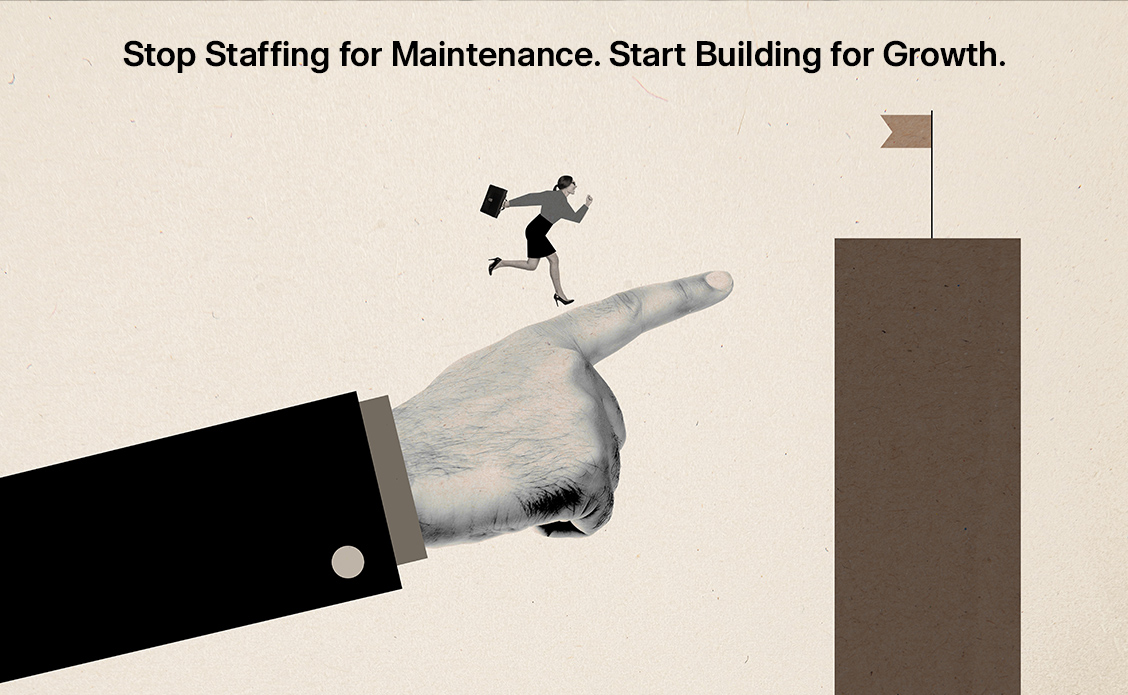The Speed-Quality False Dilemma:
Most founders believe they have to choose: fast delivery or quality output. This false dilemma has created an entire industry of “rapid development” solutions that consistently disappoint. The reality is that speed and quality aren’t opposing forces—they’re complementary outcomes of intelligent team architecture.
The problem isn’t technical capability or time constraints. It’s structural. Traditional team building prioritizes permanence over performance, creating bloated hierarchies that slow decision-making and dilute accountability. Meanwhile, the fastest-shipping companies have discovered that flexible, purpose-built teams often outperform permanent departments on both speed and quality metrics.
The counterintuitive truth: temporary teams with clear objectives ship faster and better than permanent teams with unclear priorities. When you eliminate the politics, process overhead, and coordination complexity of traditional team structures, you unlock execution velocity that doesn’t compromise craftsmanship.
At NextAccel, we’ve studied delivery performance across 220+ scaling companies. The pattern is clear: founders who master flexible team assembly consistently outship competitors while maintaining higher quality standards.
Focus Multiplies, Bureaucracy Divides
Image idea: A dynamic comparison showing traditional vs. flex team structures. Left side: complex organizational chart with multiple layers, meeting cycles, and approval chains slowing project flow. Right side: streamlined flex team with direct lines of communication, rapid iteration cycles, and clear deliverable focus.
Here’s the NextAccel framework for building flexible teams that deliver exceptional results at exceptional speed.
Step 1: Reverse-Engineer Your Delivery Friction Points (DEFINE Your Velocity Blockers)
Ask your leadership team this diagnostic question:
“What percentage of your current project timelines is spent on actual execution vs. coordination, approval, and rework? If more than 30% of your delivery time is consumed by process overhead, you’re optimizing for team management instead of outcome delivery.”
Most delivery delays stem from team structure problems, not capability problems. Your flex architecture isn’t “who can we hire quickly”—it’s “how can we eliminate the friction that prevents rapid, quality delivery.”
The NextAccel DEFINE Framework for Delivery Intelligence:
- Bottleneck Mapping: Identify where decisions slow down vs. where execution slows down in your current delivery process
- Accountability Clarity: Define who makes final decisions vs. who provides input to eliminate approval chain delays
- Skill Precision: Determine exactly what expertise you need vs. what organizational roles you think you need
- Timeline Reality: Establish what’s actually possible with focused teams vs. what’s traditionally expected from department structures
I run clients through this exercise: “If you could assemble a 3-person team to deliver your most important project in 6 weeks, what specific roles and decision-making authority would they need?”
Generic team building creates organizational complexity. Precision team assembly creates delivery velocity because you’re optimizing for outcomes, not org charts.
Step 2: Build Delivery Architecture That Scales with Precision (The DEPLOY System)
Here’s the uncomfortable truth: 80% of delivery delays come from team coordination overhead, not individual performance issues. More people often means more meetings, more approvals, and more opportunity for quality degradation.
Your delivery architecture needs focused execution that eliminates friction, not comprehensive coverage that creates coordination complexity.
The NextAccel Flex Delivery Stack:
- Core Execution Unit (outcome ownership): 2-4 specialists with complementary skills who can deliver complete solutions without external dependencies
- Decision Authority (speed enablement): Clear accountability for project decisions that eliminates approval bottlenecks and revision cycles
- Quality Integration (craftmanship maintenance): Built-in review processes that maintain standards without slowing delivery velocity
- Communication Protocols (coordination efficiency): Streamlined feedback loops that enable rapid iteration without creating meeting overhead
I’ve tested this across 40+ product development cycles. Traditional team structures create process compliance. Flex delivery units create outcome achievement.
Tactical Implementation:
- Autonomous Execution: Teams with complete skill sets that can deliver end-to-end solutions without waiting for external resources
- Embedded Quality Control: Quality standards built into execution process rather than separate review and approval stages
- Direct Communication: Stakeholders work directly with execution teams rather than through project management intermediaries
- Iterative Delivery: Rapid cycle feedback that enables continuous improvement without stopping forward momentum
The goal: every flex team should either deliver complete outcomes or build toward complete outcomes without requiring external coordination to maintain quality.
Step 3: Optimize for Delivery Momentum, Not Resource Allocation (The DELIVER Discipline)
Most leadership teams prioritize resource efficiency over delivery velocity. This creates perfectly allocated teams that deliver slowly instead of focused teams that deliver breakthrough results rapidly.
I ask clients: “Would you rather have a perfectly structured team that delivers in 12 weeks, or a focused flex team that delivers the same quality in 4 weeks?”
The NextAccel Flex Delivery Priorities:
- Momentum Over Methodology: Teams that maintain forward progress vs. teams that follow comprehensive process protocols
- Outcomes Over Activities: Specialists focused on specific deliverables vs. team members focused on role responsibilities
- Speed Over Structure: Rapid iteration and decision-making vs. thorough documentation and approval processes
- Quality Integration Over Quality Control: Standards built into execution vs. quality checks applied after completion
- Accountability Over Coordination: Individual ownership of results vs. team coordination of activities
This isn’t sloppy execution—it’s strategic delivery optimization. Every flex team investment should create delivery capability that exceeds traditional team performance on both speed and quality.
Quarterly Diagnostic Exercise:
“Review your last 5 major deliverables. Which were completed faster and better by smaller, focused teams vs. larger, structured teams? Which delivery approaches created the best outcomes with the least coordination overhead?”
Common optimization discoveries:
- Development flex teams ship features faster while maintaining code quality through embedded review processes
- Design flex teams deliver user experience solutions that permanent design teams couldn’t achieve through traditional creative processes
- Marketing flex teams execute campaigns that generate better results than department-based marketing coordination
- Sales flex teams build revenue systems that permanent sales teams couldn’t create through traditional territory management
Step 4: Systematize Flex Discipline (Not Permanent Bureaucracy)
Here’s what I tell every founder: “Impressive org charts don’t ship impressive products. Disciplined flex team assembly does. If your delivery teams spend more time coordinating than executing, you’re building management complexity, not delivery capability.”
The NextAccel Flex Operations Framework:
- Weekly Delivery Reviews: Every flex team measured against specific outcome delivery vs. process completion milestones
- Monthly Team Optimization: Leadership evaluation of which flex configurations are delivering breakthrough results vs. which need structural adjustment
- Quarterly Delivery Analysis: Systematic comparison of flex team performance vs. traditional team performance to optimize assembly strategies
- Annual Velocity Evolution: Strategic review of flex team effectiveness vs. permanent team investment to guide staffing architecture decisions
Without disciplined assembly protocols, flex teams become expensive consulting instead of delivery acceleration. With systematic discipline, you build team architecture muscle memory that ships fast without compromising quality.
Final Framework: Flex Architecture Drives Competitive Delivery
Your staffing strategy isn’t a hiring process—it’s your competitive delivery advantage. Companies that master flex team assembly don’t just ship faster than their traditionally-structured competitors, they deliver quality that permanent teams can’t achieve through bureaucratic processes.
When market windows narrow or competitive pressure intensifies, flex delivery becomes your strategic execution advantage. You deploy focused capability based on specific outcome requirements instead of managing team relationships based on organizational structure needs.
At NextAccel, we’ve helped dozens of founders transform delivery bottlenecks into delivery acceleration through intelligent flex team architecture.
The companies that achieve breakthrough shipping velocity think like delivery architects, not HR managers. They build flex teams that deliver specific outcomes, not permanent departments that manage ongoing activities.
Looking to accelerate delivery without sacrificing quality?
Schedule a session and identify which delivery challenges need focused expertise vs. traditional departmental resources.




